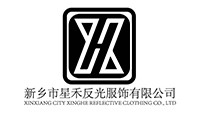Nov 23, 2023
Αφήστε ένα μήνυμα
In 1937, the world's first reflective film was born in the laboratory of 3M Company. This is the starting point of the history of large-scale application of reflective film in traffic signs.
In 1939, a sign made of Scotchlite™ reflective film was used for the first time in open air conditions on the side of a highway in Minnesota, starting a new era of reflective products for traffic signs and creating a whole new traffic safety industry. In this year, the national standard for Traffic signs in the United States (the 1939 edition of the United States "Unified Traffic Control Devices Manual", 1939) officially stipulated that the use of reflective film to manufacture traffic signs.
Since the 1940s, this originally manufactured reflective film, dubbed "engineering grade" reflective film, has been widely used in road traffic signs.
In 1950, Dr. Dong Qifang, a Chinese-American scientist, developed directional glass microbeads, and subsequently developed a series of reflective materials such as reflective cloth.
In 1968, the ROWLAND brothers in the United States created and registered the micro-prism retroreflection technology. After the emergence of micro-prism reflective materials, this reflective material, which was originally mainly used for traffic signs, began to be gradually replaced by newer and better reflective materials.
Perhaps in the future, the light reflective film will gradually replace the old materials, because they are more beautiful and the quality is more prominent. Or, in the future, there will be self-luminous reflective materials that absorb solar energy into LED light energy, which will completely replace crystal grids and all kinds of advertising materials and become the mainstream.

